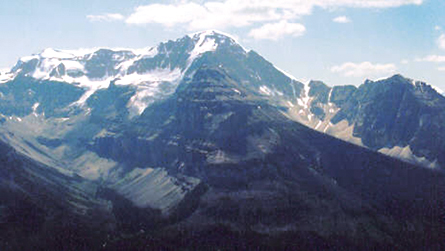- More than 2 years ago
One of paleontology’s most revered fossil sites now has a baby brother. Scientists have discovered a group of astonishing fossils high in the Canadian Rockies, just 40 kilometers from the famous Burgess Shale location.

A paper describing the find appears in the September issue of Geology.
Since its discovery in 1909, the Burgess Shale has yielded many thousands of fossils dating to 505 million years ago — a period often called “evolution’s big bang,” when animals were exploding in diverse body plans. These soft-bodied critters scurried around on the sea floor, then were buried in mudslides and exquisitely preserved.
Burgess fossils appear in several outcrops, all within about 60 kilometers of Field, British Columbia, and all occurring in shale deposits of the Stephen Formation that are 270 to 370 meters thick. Now, a team led by paleontologist Jean-Bernard Caron of the Royal Ontario Museum in Toronto reports finding Burgess-like fossils in the valley of the Stanley Glacier in Kootenay National Park, where a much thinner part of the Stephen Formation that ranges from 16 to 160 meters thick is exposed.
“This new locality adds to our knowledge of the environments where these organisms lived and died and thus adds important context,” says Peter Allison, a geoscientist at Imperial College London.
About half of the animal groups found at Stanley Glacier, such as trilobites, are found at other Burgess sites in different abundances. But the creatures unearthed also include eight taxa previously unknown to science. They include an unnamed worm; Stanleycaris hirpex, a segmented shrimplike critter known as an anomalocarid; and an arthropod with big eyes dangling on stalks from its head shield.
Until now, paleontologists had thought one reason the Burgess fossils were so well preserved was because they settled in thick deposits at the bottom of an ancient ocean protected by a submarine cliff. But the Stanley Glacier fossils weren’t formed in the presence of such a cliff, suggesting that creatures can be fossilized in amazing detail in other environments.
“We consider it likely that future exploration and study will continue to yield new taxa from the ‘thin’ Stephen Formation, which is exposed over a broader area regionally than the ‘thick’ Stephen Formation,” the researchers write.
New discoveries are still emerging from the classic Burgess localities. In May, after studying new Burgess fossils from one of the original sites, Caron and colleagues reported new details on a creature that may be one of the earliest known relatives of octopuses, squid and other cephalopods.





